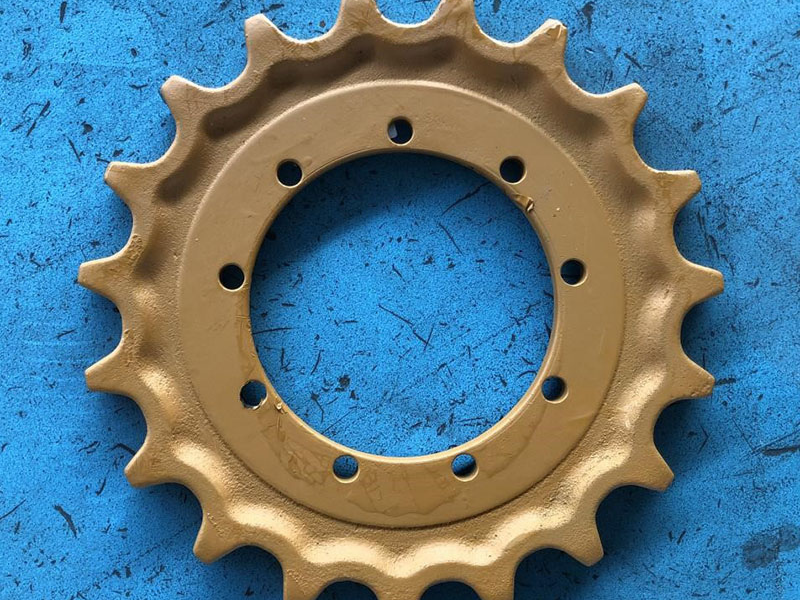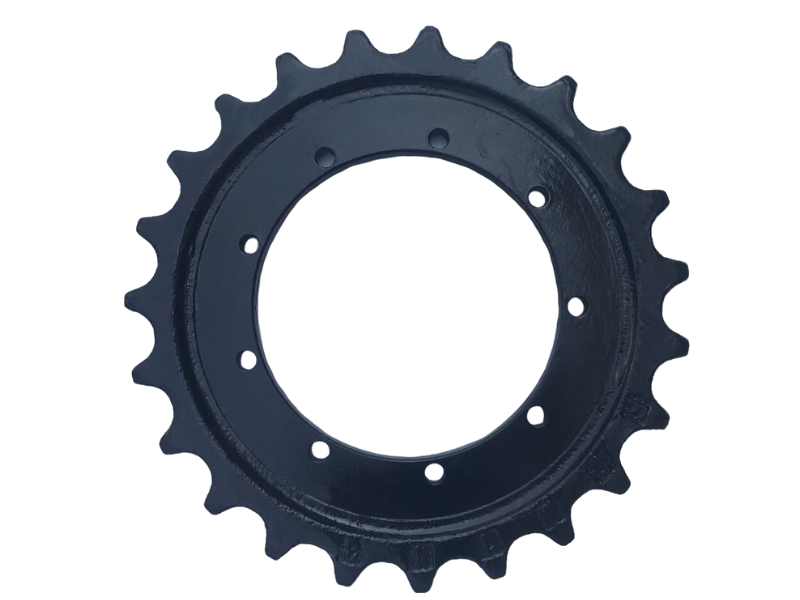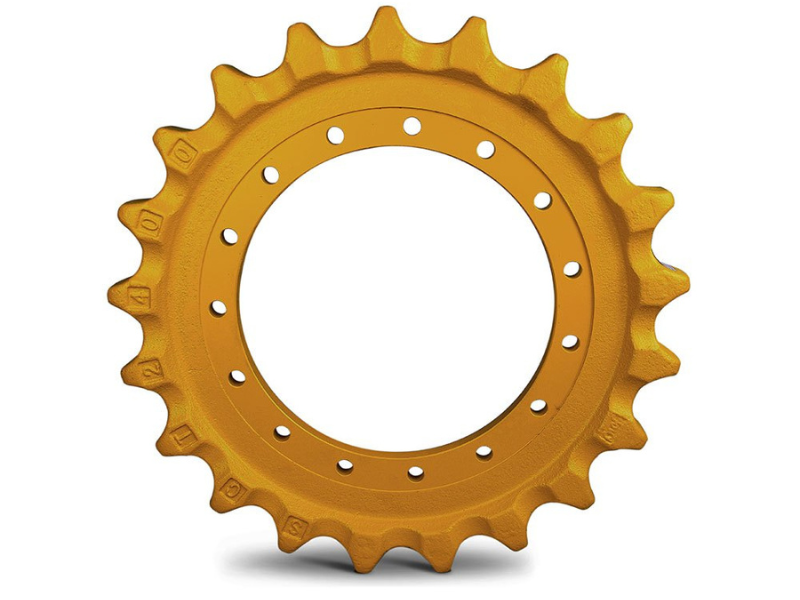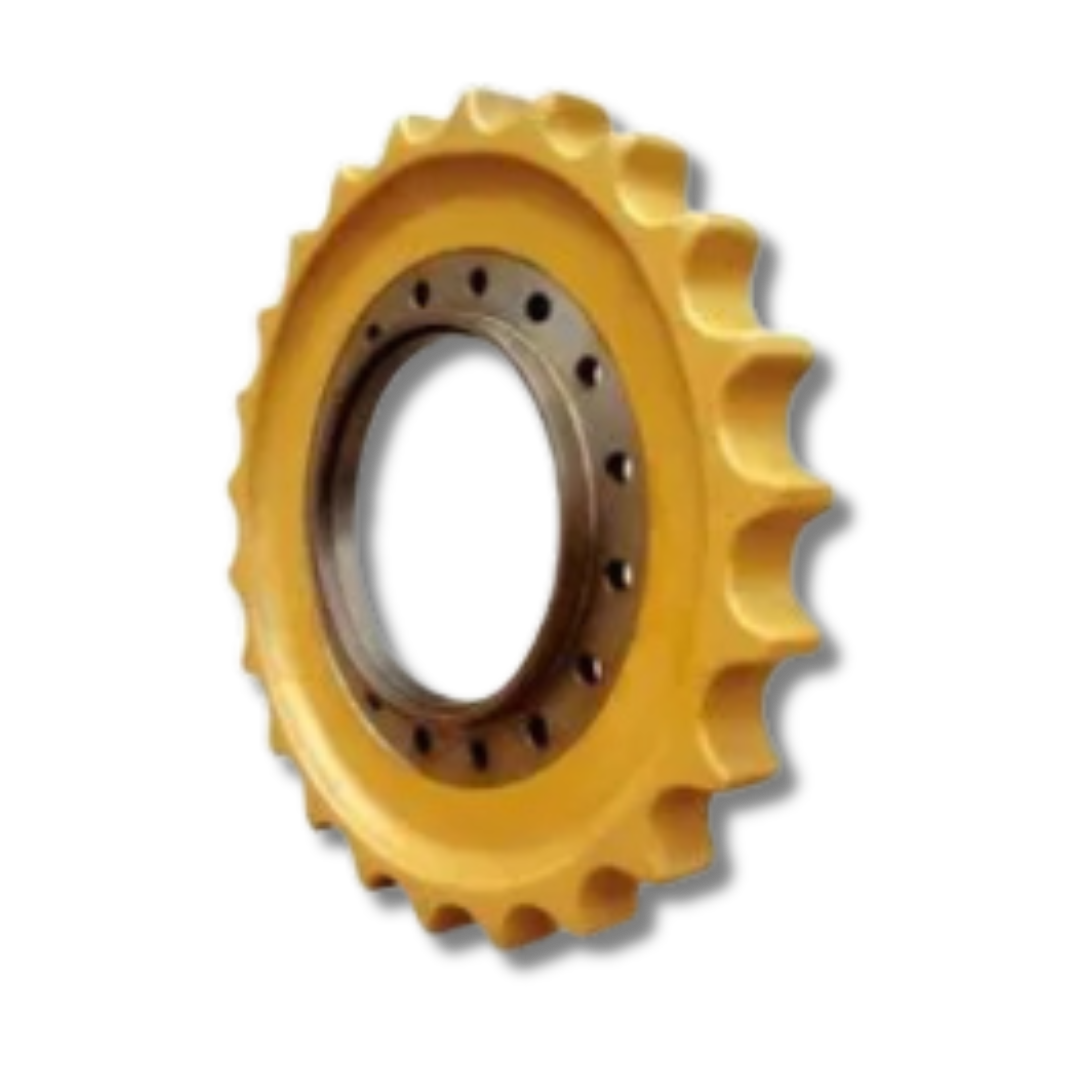
The excavator sprocket in chennai is a key undercarriage component that drives the track chain by transferring power from the final drive. Positioned at the rear, its precision teeth engage with the track links to ensure smooth movement, traction, and alignment. Made from high-strength, wear-resistant steel, sprockets are built to handle heavy loads and harsh conditions. Their durability is vital for undercarriage life and overall machine performance.
An excavator sprocket is a toothed wheel in the undercarriage that drives the machine’s tracks. Mounted at the rear and linked to the final drive motor, it engages with the track links to convert hydraulic power into movement.
Built from high-strength, wear-resistant steel, the sprocket ensures smooth track motion, withstands heavy loads, and helps prevent premature chain wear. Simply put, it is the driving force that keeps the excavator moving efficiently across tough terrain.
Excavator sprockets transfer power from the final drive motor to the track chain, making the machine move. Mounted at the rear of the undercarriage, the sprocket’s teeth engage with the track bushings, pushing the chain forward or backward.
This constant engagement allows the excavator to climb, turn, and maneuver on rough terrain with precision. Built to handle heavy loads, sprockets must resist wear and maintain accurate tooth pitch to prevent slippage and misalignment.
In essence, the sprocket is the driving gear of the undercarriage—converting hydraulic power into smooth, controlled movement.

Located at the rear, the drive sprocket connects to the final drive motor and powers track movement. Its toothed design engages with the track links, converting engine force into forward or backward motion. Worn drive sprockets can cause slippage, traction loss, and faster track wear.
Positioned at the front, the idler sprocket doesn’t deliver power. Instead, it guides and tensions the track, keeping it aligned and stable. A faulty idler can lead to misalignment, uneven wear, and stress on rollers.
Excavator sprocket performance depends on three critical factors:
The distance between two track chain pins.
Must match sprocket teeth exactly.
Wrong pitch leads to faster wear, vibration, and poor efficiency.
Number of teeth around the sprocket.
More teeth = smoother engagement, longer life, but less torque per tooth.
Fewer teeth = higher torque, more digging power, but faster wear.
The strength and lifespan of an excavator sprocket depend heavily on its build and materials. High-strength alloy steels, often enhanced with manganese or chromium, provide the toughness and wear resistance needed for heavy-duty work.
Forged sprockets are denser and more durable, ideal for demanding applications, while cast sprockets offer a cost-effective option for standard use. Heat treatments like induction hardening and quenching & tempering give the teeth a hard, wear-resistant surface while keeping the core tough enough to handle impact.

Excavator sprockets gradually wear down with use, and knowing the warning signs helps prevent downtime.
Hooked or Pointed Teeth – Teeth sharpen or hook instead of being flat-topped.
Rounded or Thinner Teeth – Poor grip on the chain, leading to slippage.
Cracks or Chips – Structural damage that can quickly worsen.
Keep it Clean: Remove mud, rocks, and debris to prevent accelerated wear.
Inspect Often: Watch for hooked, cracked, or chipped teeth.
Check Track Tension: Avoid tracks that are too tight or too loose.

Excavator sprockets generally last 3,000–5,000 operating hours, though this varies with conditions and maintenance.
Soil type: Abrasive sand or rock wears sprockets faster than softer clay or mud.
Track tension: Too tight or too loose accelerates tooth wear.
Upgrading an excavator sprocket requires careful attention to fit and compatibility. The sprocket must match the track pitch, tooth profile, and chain size to prevent uneven wear and premature failure.
OEM vs Aftermarket: OEM offers guaranteed fit, while quality aftermarket options can save costs if specs match.
Q1. What does an excavator sprocket do?
It transfers power from the drive motor to the track, moving the machine forward or backward.
Q2. When should I replace my sprocket?
Replace it if the teeth are sharp, the track skips, or you notice extra vibration and noise.
Q3. Should I replace sprockets with the track chain?
Yes, replacing both together prevents uneven wear and extends lifespan.
Q4. How long do sprockets last?
Typically 3,000–5,000 hours, depending on conditions and maintenance.
Q5. Do aftermarket sprockets work as well as OEM?
Yes, if they meet OEM standards and come from a trusted supplier.
Q6. How can I make sprockets last longer?
Keep track tension correct, clean debris, and avoid rough operating habits.

Excavator Rock Bucket | Excavator Skeleton Bucket | Excavator Trapezoidal Bucket | Excavator Soil Bucket | Excavator Loader Bucket | Excavator Single-Shank Ripper | Excavator Triple-Shank Ripper | Excavator Track Link Assembly | Excavator Tooth Points | Excavator JCB Teeth & Side Cutter | Excavator Idler | Excavator Sprocket | Excavator Lower Roller | Excavator Undercarriage | Excavator Track Group | Excavator Bolts | Excavator Rock Bucket in Chennai | Excavator Skeleton Bucket in Chennai | Excavator Trapezoidal Bucket in Chennai | Excavator Soil Bucket in Chennai | Excavator Loader Bucket in Chennai | Excavator Single-Shank Ripper in Chennai | Excavator Triple-Shank Ripper in Chennai | Excavator Track Link Assembly in Chennai | Excavator Tooth Points in Chennai | Excavator JCB Teeth & Side Cutter in Chennai | Excavator Idler in Chennai | Excavator Sprocket in Chennai | Excavator Lower Roller in Chennai | Excavator Undercarriage in Chennai | Excavator Track Group in Chennai | Excavator Bolts in Chennai | Excavator Rock Bucket in India | Excavator Skeleton Bucket in India | Excavator Trapezoidal Bucket in India | Excavator Soil Bucket in India | Excavator Loader Bucket in India | Excavator Single-Shank Ripper in India | Excavator Triple-Shank Ripper in India | Excavator Track Link Assembly in India | Excavator Tooth Points in India | Excavator JCB Teeth & Side Cutter in India | Excavator Idler in India | Excavator Sprocket in India | Excavator Lower Roller in India | Excavator Undercarriage in India | Excavator Track Group in India | Excavator Bolts in India
TEAM. All Rights Reserved. Developed by Pixel Tech.